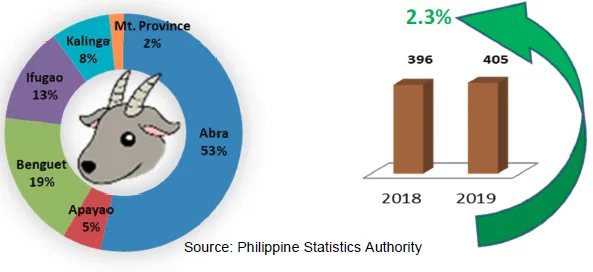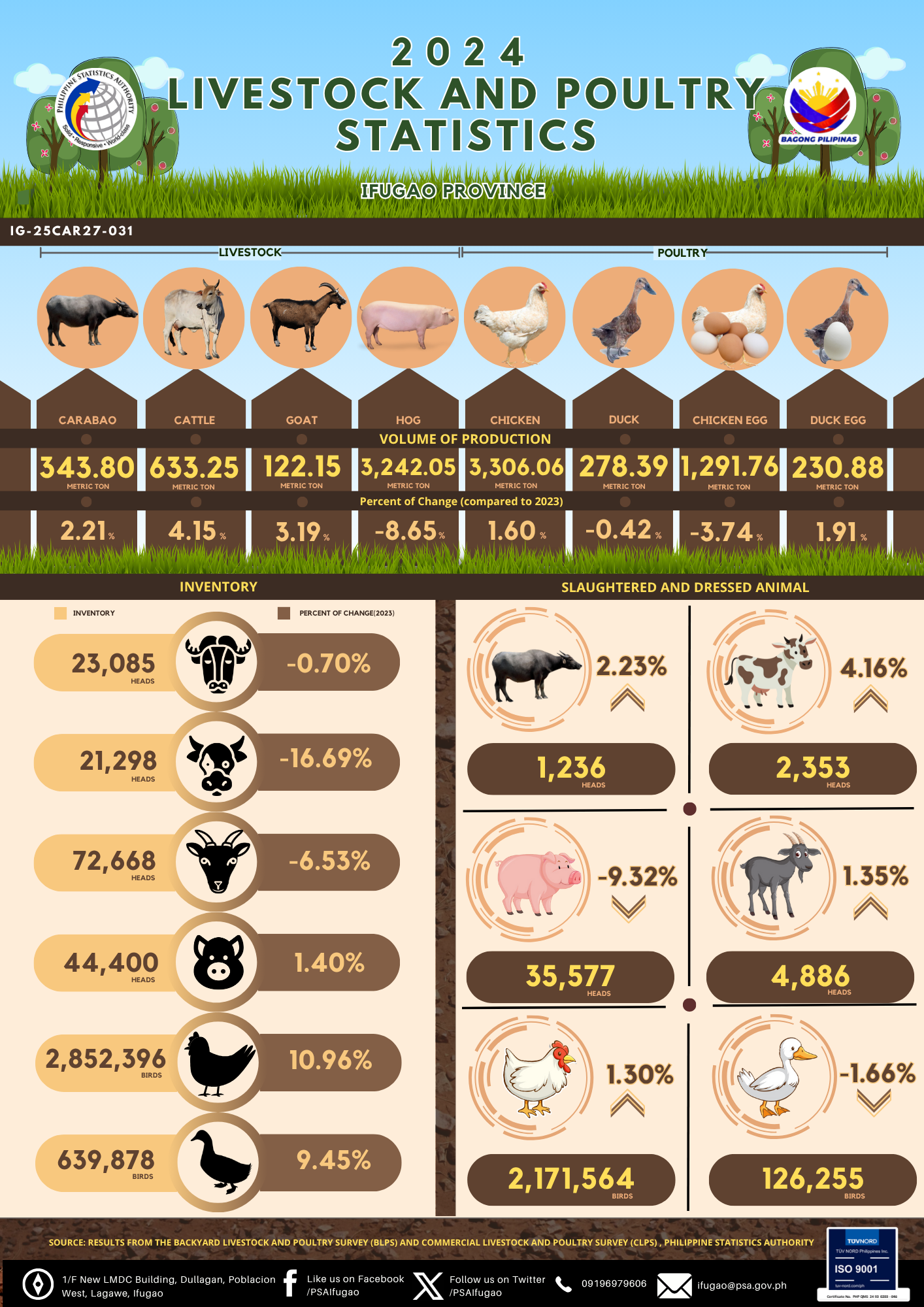Production of livestock refers to the volume of indigenous (locally-raised) animals disposed for slaughter which include animals exported or shipped-out for slaughter (in “head” and in “liveweight equivalent”). Total volume of livestock production refers to the aggregate production of carabao, cattle, swine and goat.
- Total volume of livestock production in CAR for the 2nd semester of 2020 was 18,157 metric tons, liveweight. This was 4.4 percent lower compared with the previous year’s level of 18,995 metric tons liveweight.
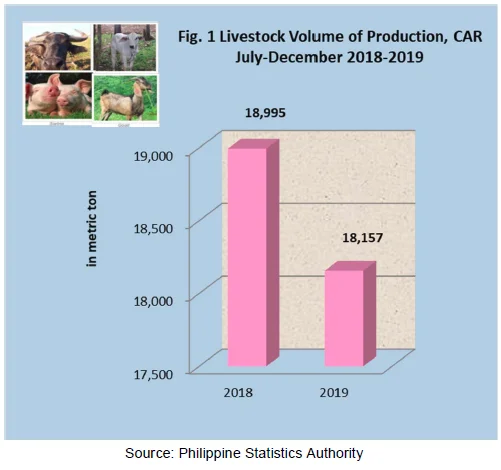
Table 1. Livestock Volume of Production
by Province, CAR: July-December 2018-2019

Figure 2. Percent Distribution of Livestock Production, CAR:
July-December 2019
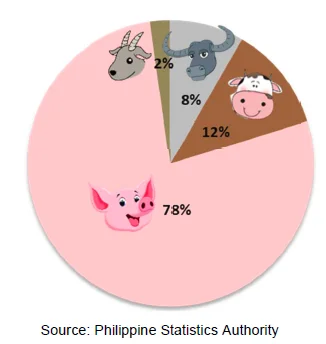
-
Of the region’s total livestock production during the 2nd semester of 2019, hog contributed the biggest share with 78 percent. The remaining 22 percent was shared by cattle, carabao and goat at 12 percent, 8 percent and 2 percent, respectively (Figure 2).
-
Carabao production was estimated at 1,518 metric tons, an increase of 1.4 percent from last year’s level of 1,497 metric tons. Abra was the major producer of carabao in the region with 45 percent contribution, followed by Benguet and Ifugao each with 15 percent share, Kalinga with 13 percent and Apayao with 9 percent. Mountain Province contributed the least production with a share of 3 percent.
Figure 3. Percent Distribution of Carabao Production, CAR
July-December 2019
- Meanwhile, production of cattle for the 2nd semester of 2019 posted a decline of 2.6 percent from last year’s 2,205 metric tons to 2,148 metric tons. Abra was the biggest contributor with 37 percent share. Kalinga ang Ifugao contributed 20 percent each while Benguet shared 13 percent. Apayao and Mountain Province recorded 7 percent and 3 percent shares, respectively.
Figure 4. Percent Distribution of Cattle Production, CAR:
July-December 2019

- Hog production posted a decline of 5.4 percent in the second half of 2019. It went down from 14,897 metric tons in 2018 to 14,086 metric tons in 2019. Kalinga contributed the biggest share with 25 percent followed by Benguet with 20 percent, Ifugao with 18 percent and Abra and Mountain Province each with 14 percent shares. Apayao had the least contribution with 9 percent.
Figure 5. Percent Distribution of Hog Production, CAR:
July-December 2019
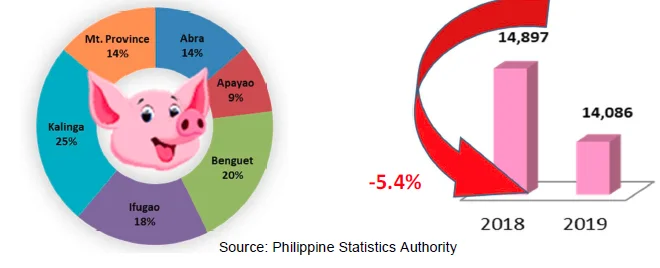
- Production of goat for the second semester of 2019 in the Cordillera displayed an upward trend as compared with same period the previous year. It recorded a 2.3 percent increase from 2018 output of 396 metric tons to 405 metric tons in 2019. Abra was the major producer of goat in the region contributing more than half of the region’s production with a share of 53 percent. Mountain Province contributed the least with only 1 percent.
Figure 6. Percent Distribution of Goat Production, CAR:
July-December 2019
